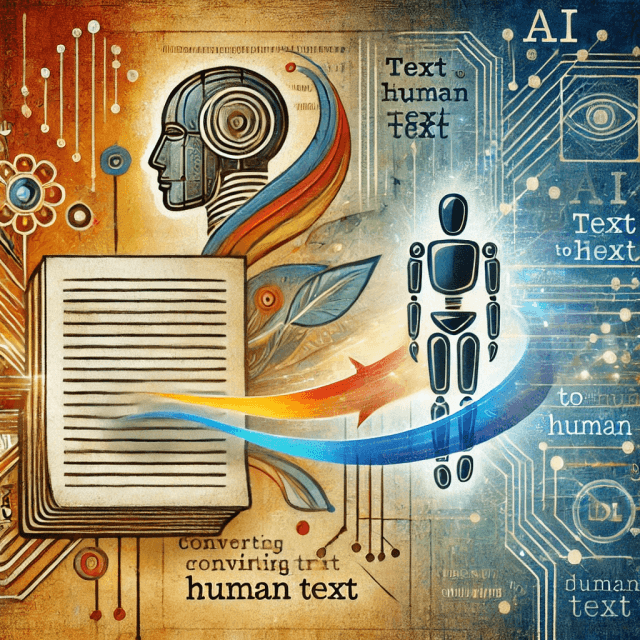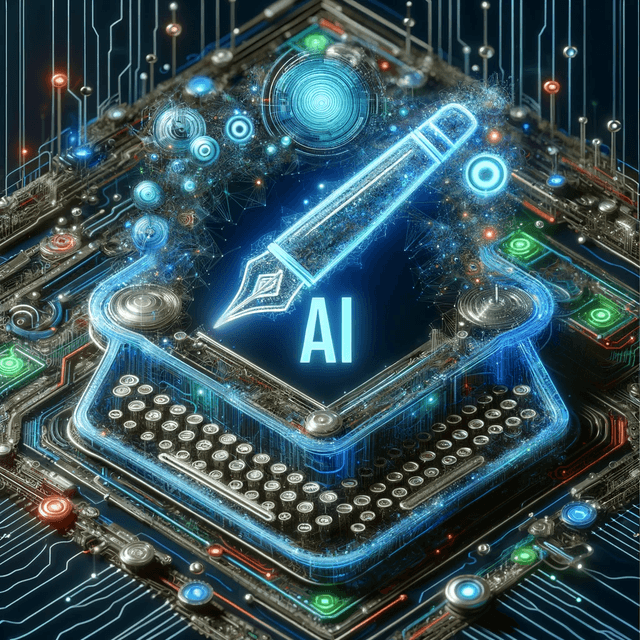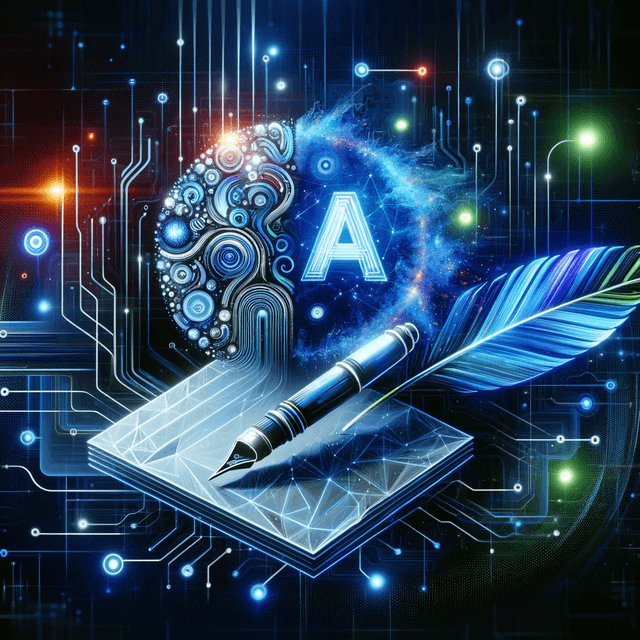
AI Editor
Enhance the clarity and professionalism of your writing with Typli.ai’s AI Editor. This tool corrects punctuation and makes minimal edits, ensuring your text remains as close to the original as possible while improving readability.
Instructions
- Copy and paste your text into the AI Editor’s textarea.
- Press Edit Text, and Typli will correct punctuation errors and make minimal, necessary adjustments without significantly altering the original text.
Enter Text to Edit
The Ultimate Guide to AI Editing: Perfecting Your Text with Precision
In today’s digital age, the accuracy and clarity of your written content are more important than ever. Whether you’re working on a YouTube transcript, crafting an email, preparing a report, or posting on social media, ensuring that your text is free from punctuation mistakes and minor errors is crucial. This is where AI Editing comes into play. AI Editors not only streamline the editing process but also preserve the original intent and voice of your writing. This comprehensive guide delves into the world of AI editing, helping you understand its benefits, functionalities, and how to effectively utilize these tools to enhance your writing without compromising its essence.
Table of Contents
Key Takeaways
-
AI Editors are essential for correcting punctuation and minor errors while maintaining the original wording and meaning of the text.
-
These tools utilize advanced technologies like Natural Language Processing (NLP) and artificial intelligence (AI) to ensure precise and context-aware corrections.
-
Key features of effective AI Editors include accurate error detection, preservation of original text, user-friendly interfaces, integration capabilities, and customization options.
-
Popular AI editing tools like Typli AI Editor and ProWritingAid offer specialized features catering to various editing needs, including transcript corrections and professional document editing.
-
AI Editors are invaluable for content creators, students, professionals, and non-native English speakers by providing real-time feedback and enhancing overall writing quality.
-
While AI Editors significantly improve text accuracy, they should be complemented with human proofreading for the highest level of precision.
-
Choosing the right AI Editor involves evaluating factors such as cost, features, compatibility, and specific editing requirements to ensure the tool aligns with your writing goals.
-
Additional resources like writing guides, professional editing services, and educational materials can further support your writing and editing endeavors.
Understanding AI Editing
AI Editing transcends traditional proofreading by not only identifying and correcting punctuation mistakes and minor errors but also ensuring that the original words and meaning of the text remain unchanged. The primary objective of AI Editors is to enhance the readability and professionalism of your writing without altering its fundamental message or tone.
The significance of AI Editing lies in its ability to provide precise corrections that uphold the integrity of your content. Unlike simple spell checkers that only flag misspelled words, AI Editors analyze the context and structure of your sentences to make informed adjustments. This ensures that your text is not only error-free but also maintains its intended impact and clarity.
Types of AI Editors
AI Editors come in various forms, each tailored to meet different editing needs and preferences:
-
Online AI Editors: Accessible through web browsers, these editors allow users to paste their text directly into the interface for quick and efficient editing.
-
Software-based AI Editors: Installed on computers, these tools often offer more comprehensive features and the ability to work offline, providing greater flexibility.
-
Built-in AI Editors in Writing Platforms: Many modern writing and content creation platforms come equipped with integrated AI editing functionalities, allowing seamless editing within the platform.
-
Mobile App AI Editors: Designed for on-the-go editing, these apps enable users to correct their text using smartphones or tablets, ensuring convenience and accessibility.
Each type of AI Editor offers unique advantages, from the convenience of online tools to the depth of features available in software-based options. The choice depends largely on your specific editing needs, whether it's casual content creation or meticulous professional writing.
How AI Editors Work
At the core of AI Editors lies Natural Language Processing (NLP), a branch of artificial intelligence focused on the interaction between computers and human language. NLP enables AI Editors to understand, interpret, and manipulate human language in a meaningful way. Here's how AI Editors typically function:
-
Text Analysis: The AI Editor scans the inputted text to identify punctuation errors and minor mistakes such as misplaced commas, incorrect apostrophes, or inconsistent capitalization.
-
Contextual Understanding: Utilizing NLP, the editor comprehends the context of each sentence to ensure that corrections align with the intended meaning without altering the original words.
-
Error Detection and Correction: Advanced algorithms pinpoint specific errors and suggest precise corrections. Unlike basic spell checkers, AI Editors can differentiate between homonyms and understand nuanced language usage.
-
Learning and Improvement: Many AI Editors incorporate machine learning, allowing them to improve their accuracy over time by learning from corrections and user feedback.
-
User Interaction: The editor presents the corrected text to the user, often highlighting changes and providing explanations or suggestions for further improvements.
Features of an Effective AI Editor
When evaluating AI Editors, certain features distinguish the most effective tools from the rest:
-
Accuracy in Error Detection: The ability to reliably identify and correct punctuation and minor errors without introducing new mistakes is paramount.
-
Preservation of Original Text: Effective AI Editors ensure that the original words and meaning of the text remain unchanged, maintaining the author's voice and intent.
-
User-Friendly Interface: A clean and intuitive interface enhances the user experience, making the editing process seamless and efficient.
-
Real-Time Editing: Immediate feedback and corrections allow users to make instant improvements, speeding up the writing and editing workflow.
-
Customization Options: The ability to tailor the editor’s settings to specific writing styles, such as academic, professional, or casual, ensures that corrections align with user preferences.
-
Integration Capabilities: Seamless integration with other writing tools, platforms, and applications enhances productivity by allowing users to edit within their preferred environments.
-
Explanation and Suggestions: Providing explanations for corrections helps users understand their mistakes and learn from them, fostering continuous improvement.
These features collectively contribute to an AI Editor’s effectiveness in enhancing text accuracy while preserving its original essence.
Popular AI Editing Tools
Several AI Editors have gained prominence for their reliability and advanced features. Here are a few notable ones:
-
Typli AI Editor: Specializing in correcting punctuation and minor errors without altering the original text, Typli AI Editor is perfect for tasks like refining YouTube transcripts. It offers a user-friendly interface, real-time editing, and seamless integration with various platforms. Visit Typli AI Editor.
-
ProWritingAid: A comprehensive writing assistant, ProWritingAid offers in-depth editing for grammar, punctuation, style, and readability. It integrates with numerous writing platforms and provides detailed reports to help users improve their writing skills. Accessible at ProWritingAid.
-
Grammarly: While known primarily for its grammar and spelling checks, Grammarly also offers robust punctuation correction features. It provides real-time suggestions and integrates with multiple devices and applications. Learn more at Grammarly.
-
Hemingway Editor: Focused on improving readability, the Hemingway Editor highlights complex sentences and common errors, including punctuation issues, to make your writing clear and concise. Available at Hemingway App.
These tools cater to a wide range of editing needs, from casual content creation to professional document preparation, each offering unique features to enhance your writing.
AI Editing for Specific Use Cases
AI Editors are versatile tools that can be tailored to various specific use cases, enhancing their utility across different domains:
YouTube Transcript Correction
Content creators often rely on accurate transcripts for their videos to improve accessibility and SEO. AI Editors can swiftly correct punctuation and minor errors in transcripts, ensuring they are clear and professional without altering the speaker's original words or intent. This is particularly useful for generating subtitles, enhancing viewer comprehension, and maintaining the authenticity of the content.
Academic Writing
Students and researchers can benefit from AI Editors by ensuring their papers are free from punctuation mistakes and minor errors. By preserving the original content and focus of the research, AI Editors help maintain the integrity of academic work while enhancing its presentation.
Professional Communication
In professional settings, emails, reports, and proposals must be polished and error-free. AI Editors assist by correcting punctuation and minor errors, ensuring that communications are clear, professional, and free from distractions caused by unnecessary mistakes.
Content Creation and Blogging
Writers and bloggers can use AI Editors to refine their posts, ensuring that the content is engaging and free from minor errors. This enhances readability and professionalism, making the content more appealing to readers.
Beyond Basic Editing: Enhancing Your Text
While the primary function of AI Editors is to correct punctuation and minor errors, their capabilities often extend to enhancing the overall quality of your text:
-
Readability Improvement: By ensuring proper punctuation and eliminating minor errors, AI Editors make your text easier to read and understand, enhancing the overall user experience.
-
Consistency Maintenance: Ensuring consistent use of punctuation and formatting throughout your document helps maintain a professional and polished appearance.
-
Tone Adjustment: Some AI Editors offer features to adjust the tone of your writing, making it more formal, casual, or aligned with your desired style without altering the original meaning.
-
Efficiency Boost: Automated editing saves time, allowing you to focus more on content creation and less on manual proofreading.
By leveraging these additional features, AI Editors contribute to the overall effectiveness and professionalism of your writing.
Professional Use of AI Editors
In professional environments, the quality of written communication can significantly impact outcomes. Whether drafting legal documents, business proposals, marketing materials, or academic publications, the precision and clarity of your text are crucial. AI Editors serve as invaluable tools in these settings by:
-
Ensuring Accuracy: Correcting punctuation and minor errors ensures that documents are free from distractions and convey information clearly.
-
Enhancing Professionalism: Polished and error-free documents reflect positively on the individual and the organization, fostering trust and credibility.
-
Streamlining Workflow: Automated editing accelerates the document preparation process, allowing professionals to meet tight deadlines without compromising quality.
-
Supporting Collaboration: In collaborative projects, AI Editors help maintain consistency and accuracy across documents prepared by multiple contributors.
By integrating AI Editors into professional workflows, organizations can enhance the quality and efficiency of their written communications, leading to better outcomes and stronger professional relationships.
Limitations of AI Editors
Despite their advanced capabilities, AI Editors have certain limitations that users should be aware of:
-
Contextual Nuances: While AI Editors excel at identifying and correcting punctuation and minor errors, they may struggle with understanding complex contextual nuances, leading to inappropriate corrections.
-
False Positives and Negatives: AI Editors might occasionally flag correct sentences as erroneous (false positives) or miss actual errors (false negatives), necessitating human oversight.
-
Limited Creativity: AI Editors are designed to preserve the original text, which means they may not offer creative suggestions for improving the style or flow of the writing beyond basic corrections.
-
Dependency on Input Quality: The effectiveness of an AI Editor depends on the quality of the input text. Poorly structured or highly technical content may pose challenges for accurate editing.
-
Privacy Concerns: Users must ensure that sensitive or confidential information is handled appropriately, as some AI Editors process text data on external servers.
Given these limitations, it is advisable to use AI Editors as complementary tools alongside human proofreading, especially for critical or highly nuanced documents.
Choosing the Right AI Editor for You
Selecting the ideal AI Editor involves evaluating several factors to ensure that the tool aligns with your specific needs and preferences:
-
Editing Requirements: Determine whether you need basic punctuation correction, comprehensive error detection, or additional features like tone adjustment and readability improvement.
-
User Interface and Experience: Choose an AI Editor with an intuitive and user-friendly interface that facilitates easy navigation and efficient editing.
-
Integration Capabilities: If you use specific writing platforms or applications, ensure that the AI Editor seamlessly integrates with them to streamline your workflow.
-
Customization Options: Look for tools that offer customization settings, allowing you to tailor the editing process to your preferred style and requirements.
-
Cost and Pricing Plans: Evaluate the pricing structure of different AI Editors, considering factors like subscription fees, one-time purchases, and available free versions or trials.
-
Privacy and Security: Ensure that the AI Editor adheres to robust privacy and security standards, especially if you handle sensitive or confidential information.
-
Support and Resources: Opt for tools that provide reliable customer support, comprehensive tutorials, and helpful resources to maximize your editing efficiency.
By carefully considering these factors, you can choose an AI Editor that not only meets your current editing needs but also adapts to your evolving writing goals.
Conclusion
AI Editing tools have revolutionized the way we refine and perfect our written content. By automating the correction of punctuation and minor errors, these tools enhance the clarity and professionalism of your text without altering its original meaning or voice. Whether you’re a content creator refining YouTube transcripts, a student preparing academic papers, or a professional crafting business communications, AI Editors offer invaluable assistance in achieving error-free and polished writing.
As technology continues to advance, the capabilities of AI Editors will only expand, providing even more sophisticated editing solutions tailored to diverse writing needs. By integrating AI Editors into your writing process, you can save time, improve accuracy, and focus more on the creative and substantive aspects of your work. Embrace the power of AI Editing to elevate your writing and communicate your ideas with confidence and precision.
Resources
For those looking to explore AI Editing tools and enhance their writing skills, the following resources can be extremely beneficial:
-
Books on Writing and Editing: "On Writing Well" by William Zinsser offers valuable insights into clear and effective writing.
-
AI Editing Tools: Explore different AI Editors like Typli AI Editor
Whether your goal is to refine your writing skills, prepare professional documents, or ensure your content is polished and error-free, the resources above provide a solid foundation to support your writing and editing journey.
Try more AI writing tools
There's 186 to choose from.

AI Text Generator
Unleash the power of AI to generate creative and engaging text with Typli's Free AI Text Generator. It serves as a sentence, word, and message generator.

AI Letter Generator & Writer
Quickly create professional or informal letters using our AI letter generator tool.

AI Speech Writer
Create compelling speeches with our AI speech writer — a tool to craft messages that resonate, from informative and persuasive to motivational and entertaining.

AI Debate Generator
Generate structured and compelling debate arguments with Typli's Free AI Debate Generator. Perfect for debate teams, educators, and anyone looking to develop persuasive arguments on various topics.

AI Paraphrasing Tool
Looking for a reliable paraphrasing tool? Check out our AI-powered solution.

AI Summarizer Tool
Get to the point with our efficient AI summarizer tool.

AI Acronym Generator
Get personalized and original acronyms in seconds with our user-friendly generator tool that's perfect for all your needs.

Passive to Active Voice Converter
Easily convert passive voice to active voice for a more impactful and engaging writing style.

AI Writer
Enhance your writing with Typli's Free AI Writer. Automate and improve your content creation process for blogs, articles, and more.

Bullet Point Generator
Turn your ideas into clear, concise bullet points. Perfect for presentations, lists, and summaries.

AI Image Generator
Create stunning visuals with Typli's Free AI Image Generator. Transform text into professional-quality images using advanced models like FLUX, Nano Banana, and SeeDream.

ChatGPT Rewriter
Transform your text with ChatGPT Rewriter - the ultimate tool for rephrasing and paraphrasing content.

Quote Generator
Generate compelling and impactful quotes with the help of our AI quote generator. Save time and stay inspired.

Sentence Rewriter
Transform your content with our AI sentence rewriter and create fresh, unique text.

Recipe Generator
Discover new and exciting recipes tailored to your taste preferences with Typli.ai’s AI Recipe Generator. Whether you’re looking for quick meals or gourmet dishes, our tool has you covered.

Workout Plan Generator
Create personalized workout plans tailored to your fitness goals with Typli.ai’s AI Workout Plan Generator. Ideal for all fitness levels, from beginners to advanced athletes.

Apology Generator
Craft sincere and thoughtful apologies with Typli.ai’s AI Apology Generator. Whether for personal or professional situations, our tool helps you express your feelings effectively.

Obituary Generator
Create heartfelt and respectful obituaries with Typli.ai’s AI Obituary Generator. Perfect for honoring loved ones with a personalized tribute that captures their life and legacy.

AI Text to Human Text Converter
Easily convert AI-generated text into natural, human-like language with Typli.ai’s AI Text to Human Text Converter. Perfect for making AI content more relatable and authentic.

Free No Sign-Up ChatGPT
Access ChatGPT for free without any sign-up required. Perfect for those who want to use AI-powered chat instantly without the hassle of creating an account.

English to Macedonian Translator
Effortlessly translate English text to Macedonian with Typli.ai’s Free English to Macedonian Translator. Ideal for students, professionals, and anyone looking to communicate or learn Macedonian effectively.

English to German Translator
Effortlessly translate English text to German with Typli.ai's Free English to German Translator. Ideal for travelers, students, and professionals seeking precise and fluent translations.

Persian to English Translator
Effortlessly translate Persian text to English with Typli.ai’s Free Persian to English Translator. Ideal for students, professionals, and anyone looking to understand or communicate in English effectively.

English to Spanish Translator
Effortlessly translate English text to Spanish with Typli.ai's Free English to Spanish Translator. Perfect for students, professionals, and casual users alike.

English to Latin Translator
Effortlessly translate English text to Latin with Typli.ai's Free English to Latin Translator. Ideal for students, researchers, and enthusiasts of classical languages.

English to Italian Translator
Effortlessly translate English text to Italian with Typli.ai's Free English to Italian Translator. Perfect for travelers, students, and professionals seeking accurate and fluent translations.

English to Russian Translator
Effortlessly translate English text to Russian with Typli.ai's Free English to Russian Translator. Ideal for travelers, students, and professionals seeking precise and fluent translations.

AI Writing Generator
Unleash the power of artificial intelligence to generate high-quality, engaging content with Typli's Free AI Writing Generator. Ideal for bloggers, marketers, and content creators.

AI Content Generator
Generate compelling, unique content instantly with Typli's Free AI Content Generator. Perfect for blogs, social media, and marketing material.

AI Headline Generator
Instantly generate eye-catching headlines with Typli's Free AI Headline Generator. Perfect for articles, blogs, and marketing campaigns.

Project Name Generator
Generate a creative and unique name for your project. Get name ideas that capture the essence and goals of your project.

Paragraph Rewriter
Produce authentic and captivating content by rewording paragraphs with our rewriter tool.

AI Paragraph Generator
Typli’s AI paragraph generator crafts sentences that flow like a river, delivering smooth, relevant, and surprisingly human paragraphs that get better with each use.

AI Word Expander
Add depth and creativity to your writing with our AI word expander tool for a more sophisticated language experience.

Hook Generator
Uncover the art of writing hooks, headlines, and intros that demand attention from your readers.

AI Editor
Enhance your text with precision using our AI Editor, which corrects punctuation and minor errors without altering your original words or meaning.